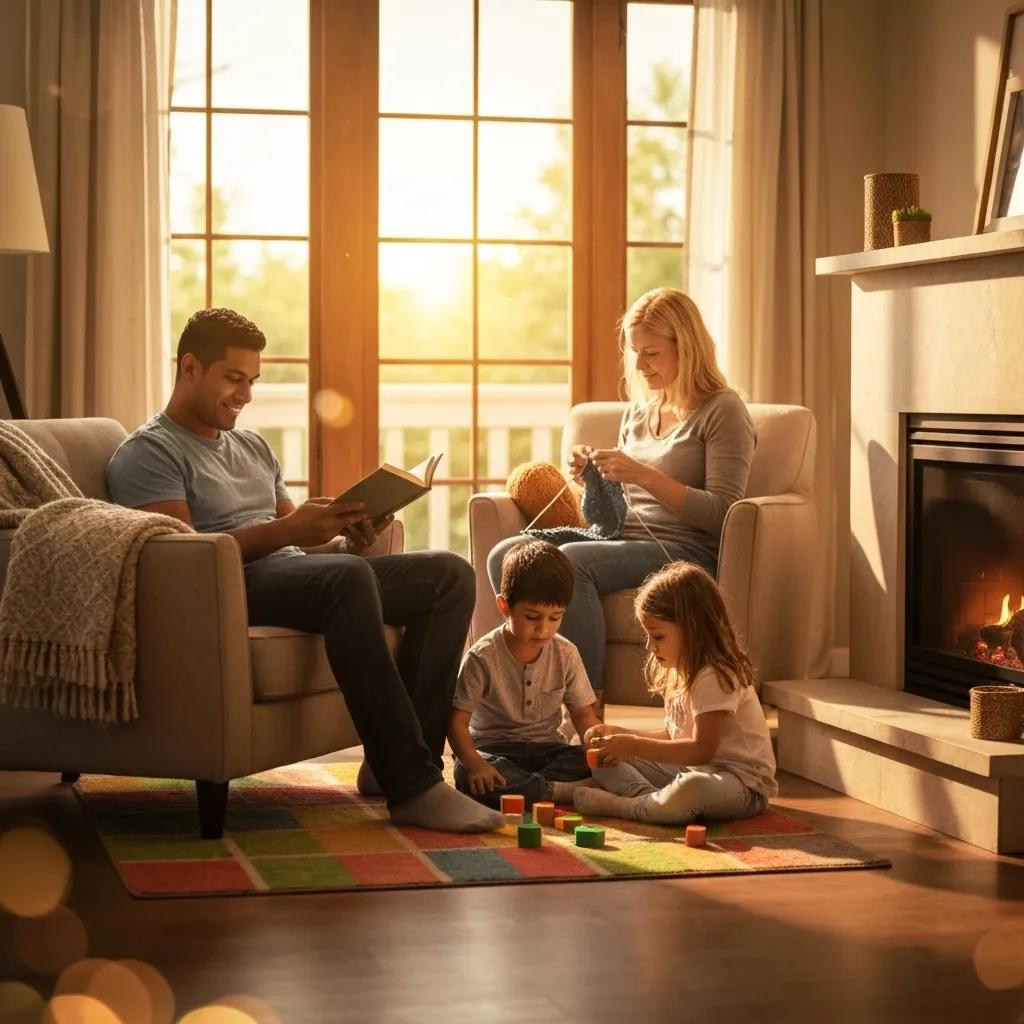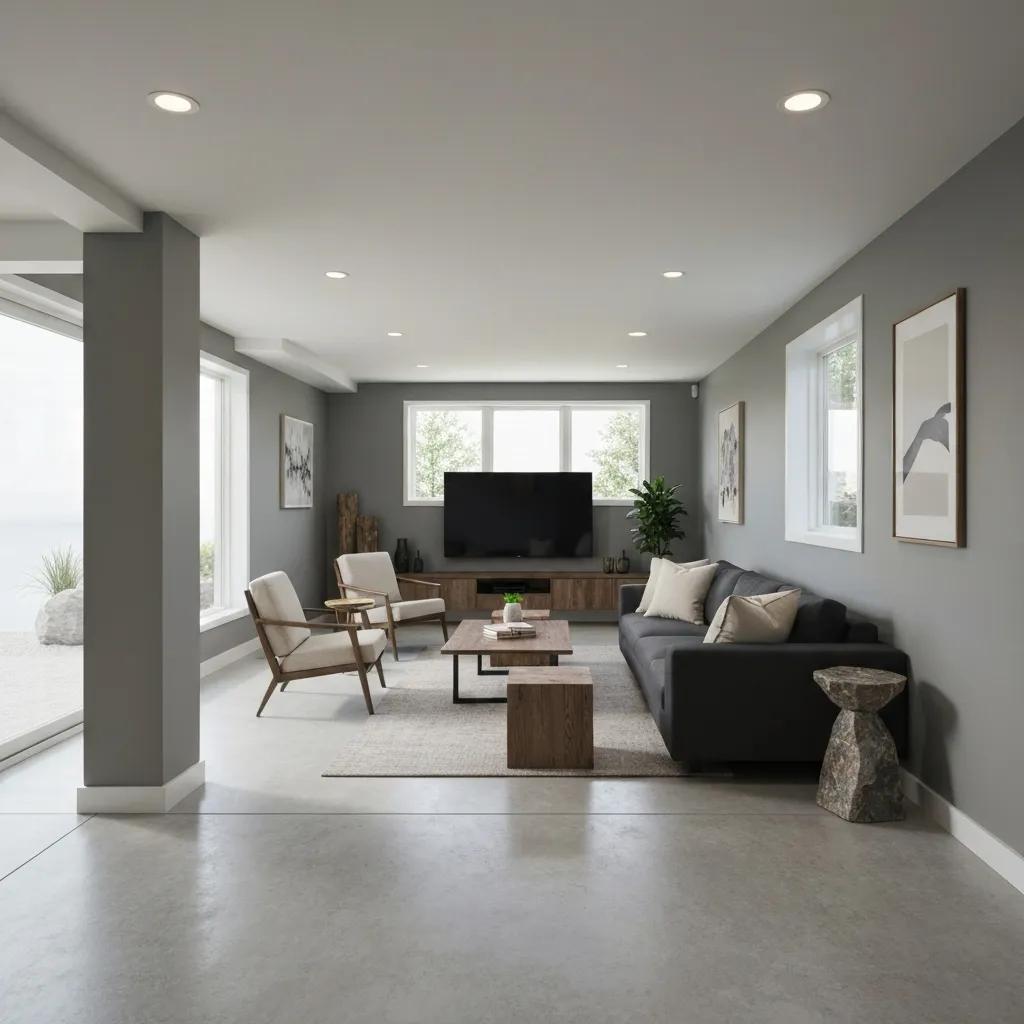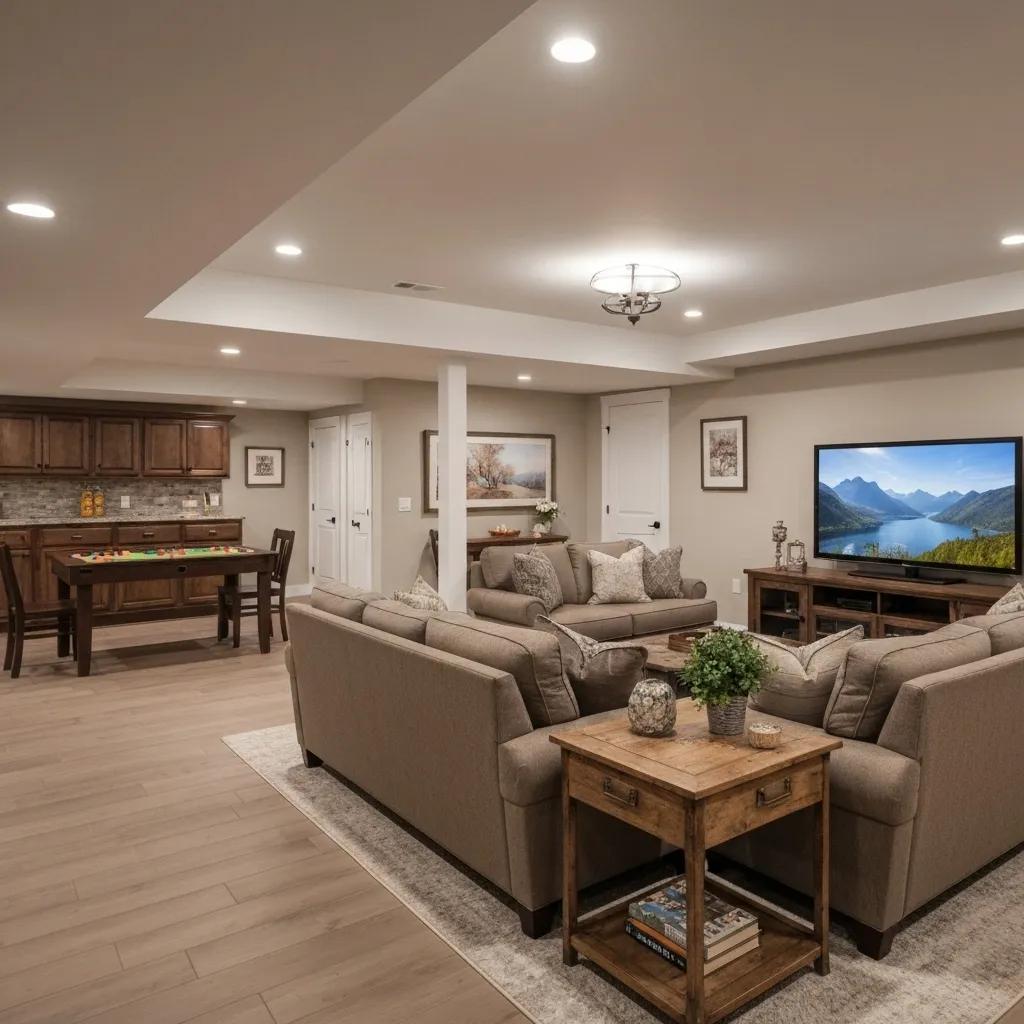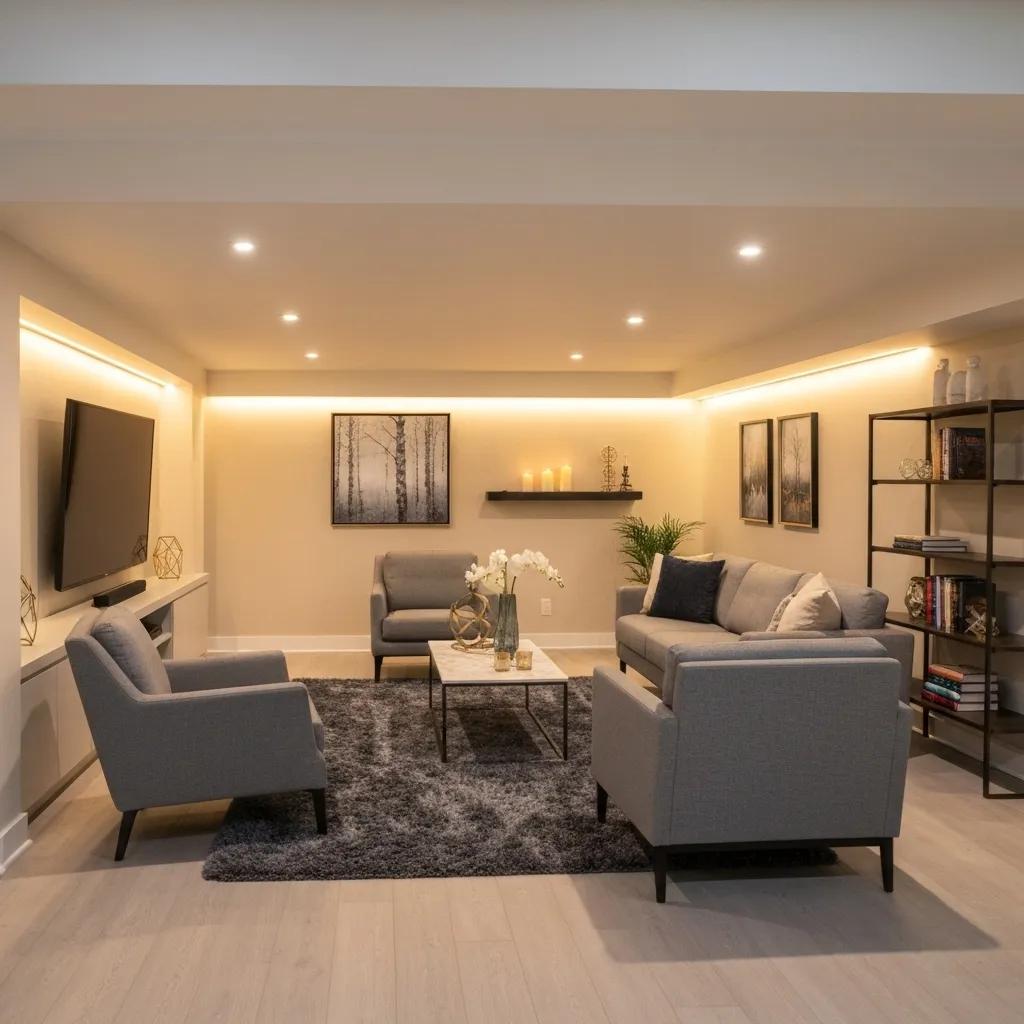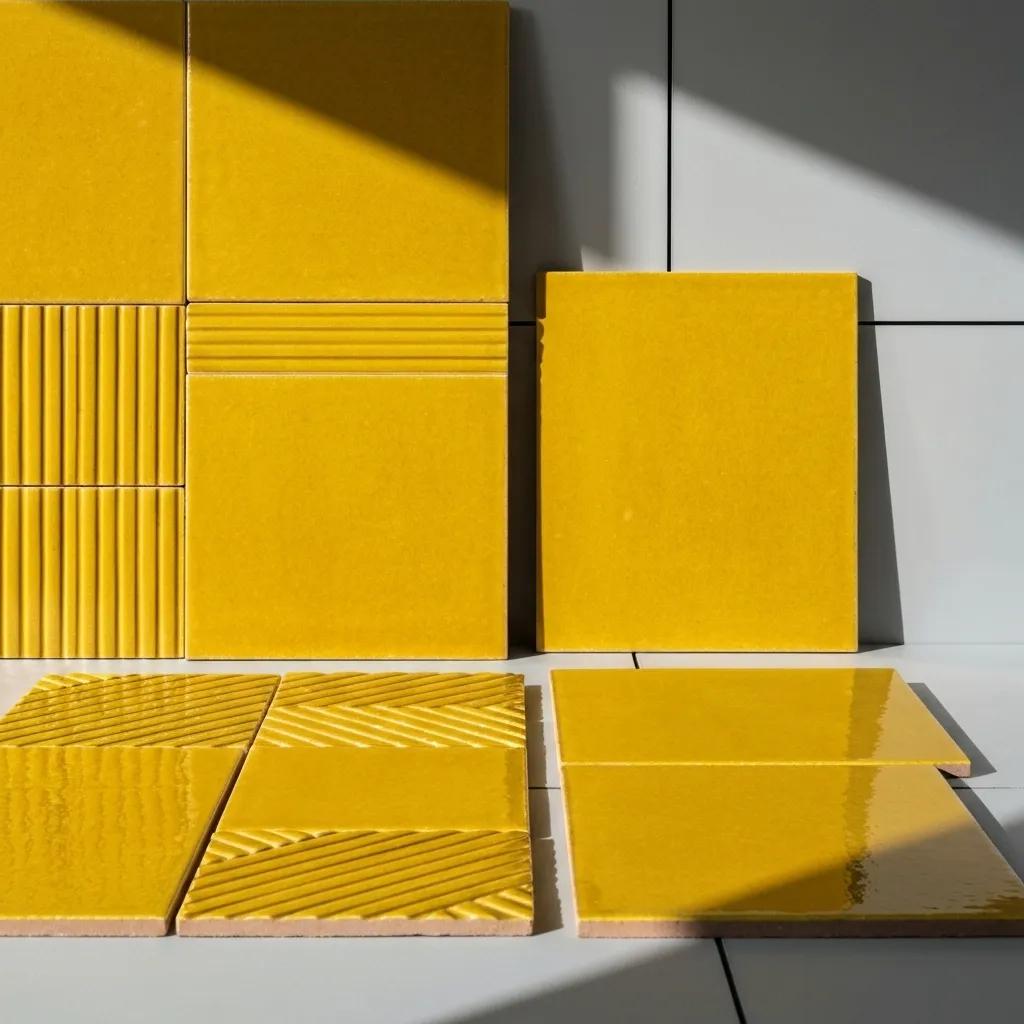When it comes to enhancing your outdoor space, choosing between wood and synthetic decking can be challenging. Many homeowners wonder which option provides the best balance of durability and aesthetics. This article will explore the benefits and drawbacks of both wood and composite decking, helping you make an informed decision for your home project. You’ll gain insights on the maintenance needs, longevity, and visual appeal of each material, equipping you to address any concerns about your new deck or stairs. Let’s dive into the pros and cons to find the right fit for your space.
Understand the Benefits of Wood Decking for Your Outdoor Space
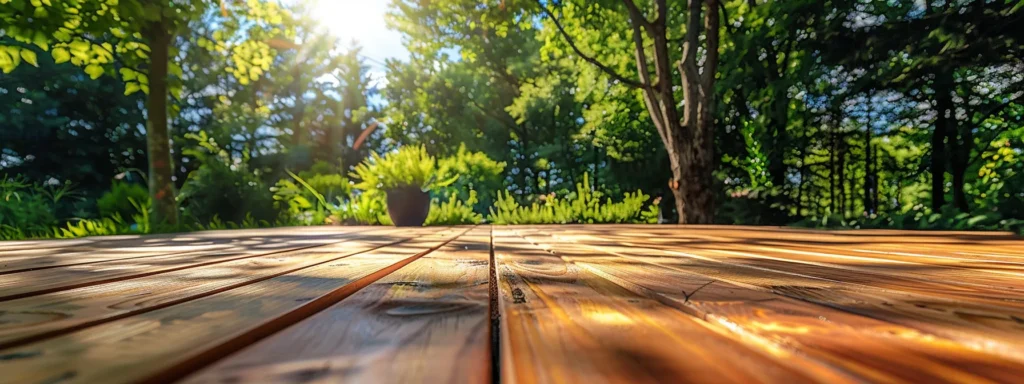
Wood decking offers a range of advantages for outdoor spaces. This section will explore the natural aesthetics that various wood options provide while reviewing the longevity of materials like cedar and pressure-treated lumber. It will assess comfort underfoot, examine environmental impacts, and consider the maintenance required for wooden surfaces, including waterproofing techniques and the use of anchor bolts and screws during installation.
Explore the Natural Aesthetics of Wood Decking Options
When considering deck design, natural wood decking stands out due to its warm, inviting aesthetics. Options such as cedar and redwood provide rich color variations that can enhance outdoor spaces, adding value over time and ensuring a pleasing appearance even when wet. Choosing wood not only contributes to a visually appealing structure but also requires a thoughtful approach to maintenance, including the proper treatment against water damage and the secure installation of supportive components like steel columns and braces.
Review the Longevity of Various Wood Materials Available
Wood materials such as cedar and redwood are known for their durability and resistance to water damage, lasting many years with proper care. The longevity of these woods often relies on well-constructed joists and a sturdy foundation that supports the entire structure. While these natural options can age beautifully, synthetic materials like composite may also be considered for their resilience and lower maintenance needs, offering a solid alternative for those concerned about upkeep and long-term performance.
Assess the Comfort Level of Wood Underfoot
The comfort level of wood decking underfoot is a significant advantage for many homeowners. Wood naturally retains energy, making it warm to walk on even in cooler weather, creating a pleasant experience for those enjoying their outdoor space. When planning to build deck stairs, using wood can often provide a cozy feel, contrasting sharply with colder synthetic materials, much like the engaging atmosphere found in card games where the right choices make all the difference. Proper measurement during installation ensures that each component, from the deck boards to the supportive structure, maximizes the comfort and safety of the deck, enhancing its value and usability.
Examine the Environmental Impact of Using Wood
Using wood for decking has various environmental considerations, especially when compared to synthetic options. Sustainably sourced wood can contribute positively to the environment by promoting responsible forestry practices, which help in preserving ecosystems. In the United Kingdom, for example, many decking projects highlight the use of certified timber that ensures the health of forests, while reasonable care is needed to install joists and metal supports to enhance the longevity of the structure, such as porches and outdoor decks.
Consider the Maintenance Requirements for Wood Decking
Maintaining wood decking requires a commitment to regular care to prolong its life and appearance. Homeowners should plan for routine cleaning and sealing to protect the lumber from water damage and sun exposure, especially if they decide to build a deck that enhances their outdoor experience. Unlike concrete surfaces that may demand less upkeep, wood decks necessitate treatments to fend off rot and insect infestations, ensuring the structure remains safe and inviting for gatherings and daily use.
Evaluate the Drawbacks of Wood Decking for Homeowners
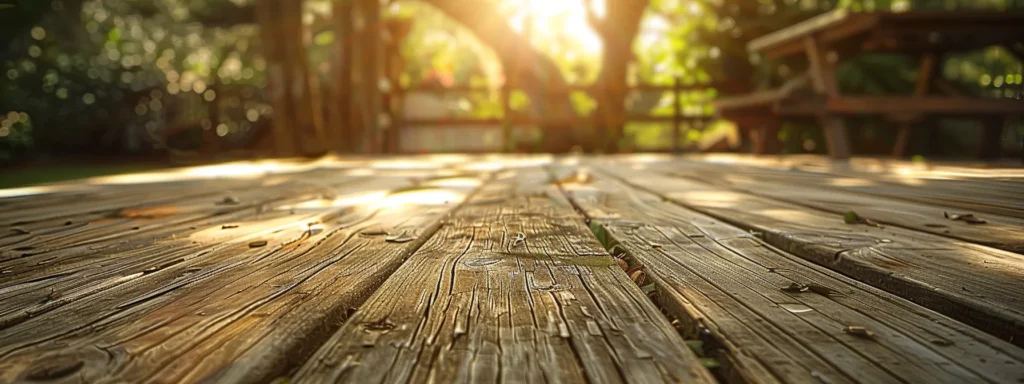
Wood decking has its drawbacks that homeowners should carefully consider. This section investigates the vulnerability of wood to rot and pests, analyzes the cost implications of wood decking installation, and observes fading or discoloration over time. It also discusses weather-related wear on wood surfaces and the additional care required for maintenance, highlighting practical insights into the associated budget and building decisions.
Investigate the Vulnerability to Rot and Pests in Wood
Wood decking is particularly susceptible to rot and pest infestations, making it critical for homeowners to be aware of these vulnerabilities. In regions like California and New Jersey, where moisture and termites can be prevalent, the effects on unprotected wood can be pronounced. Constructing a deck with quality materials and applying protective treatments can help mitigate these concerns, allowing homeowners to enjoy their outdoor space while minimizing maintenance needs that might arise from frequent care, much like strategizing in a card game where thoughtful choices lead to better outcomes.
Analyze the Cost Implications of Wood Decking Installation
The cost implications of wood decking installation can be significant, primarily influenced by the choice of materials and design. Selecting high-quality wood, such as cedar or redwood, may raise initial expenses, particularly when considering elements like the perimeter, rim joist, and adequate drainage systems in the design. Homeowners should also factor in long-term maintenance costs, including regular treatments to maintain the wood‘s integrity. This comprehensive understanding enables informed decisions regarding the overall investment in a wooden deck that aligns with their budget and lifestyle.
Observe the Fading or Discoloration Issues Over Time
Fading or discoloration issues can significantly impact the appearance of wood decking over time. When exposed to sunlight and harsh weather, even well-maintained wood can lose its vibrant hue, leading to a less appealing look for outdoor spaces. Homeowners should consider that the length of exposure to elements plays a major role in this process, as protection methods like sealing or staining can minimize fading, helping maintain a consistent color across the decking, roof, and adjoining outdoor flooring.
Discuss Weather-Related Wear on Wood Surfaces
Weather-related wear on wood surfaces can pose significant challenges for homeowners considering wood decking. Factors such as rain, sun exposure, and fluctuating temperatures can lead to warping, cracking, or the development of mold, impacting the deck‘s overall durability. It is essential for deck builders to adhere to building codes that recommend proper installation techniques, including the use of suitable fasteners and drills to ensure a secure fit, which can help mitigate these issues and prolong the lifespan of the decking.
Look Into Additional Care Needed for Wood Decking Upkeep
Homeowners must consider the additional care required for wood decking upkeep, which includes regular cleaning, sealing, and inspection for signs of wear. This maintenance is crucial to prevent issues such as rot and insect damage, which can arise if proper protocols are not followed. When planning deck framing, using tools like a tape measure can help ensure accurate dimensions, while also assessing how the decking interacts with adjacent structures, such as walls and plumbing, to maintain an integrated outdoor space.
Recognize the Advantages of Synthetic Decking Products
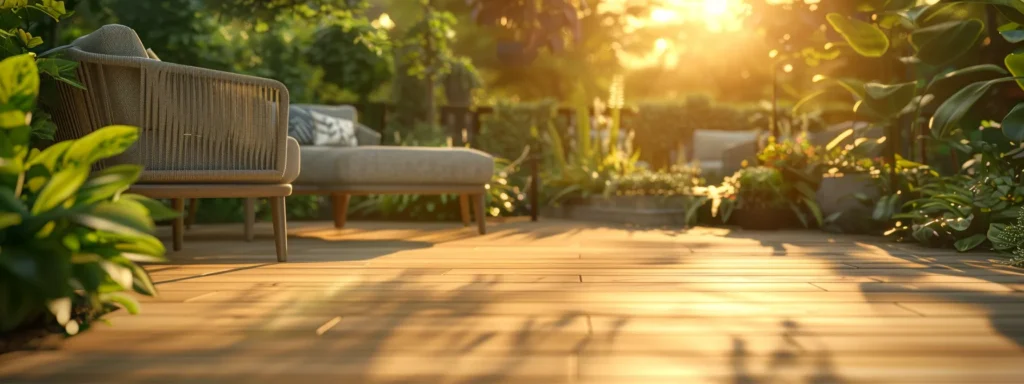
Synthetic decking products offer numerous advantages for homeowners engaged in house projects and home improvement endeavors. These materials feature low maintenance needs, ensuring that upkeep remains minimal. Their durability against weather elements enhances longevity, while impressive color retention combats fading over time. Additionally, synthetic options provide a variety of design choices and utilize recycled materials, supporting sustainable practices in carpentry and masonry.
Identify the Low Maintenance Features of Synthetic Materials
Synthetic decking materials are designed for low maintenance, making them an attractive option for deck building. Homeowners appreciate that these products do not require regular sealing, staining, or extensive cleaning, allowing them to enjoy their garden or patio without the constant upkeep associated with traditional wood. Moreover, synthetic options resist fading and warping caused by sunlight and moisture, ensuring a durable outdoor living space that looks great year-round, with minimal effort and tools necessary for maintenance.
Highlight the Durability of Composite Decking Against Elements
Composite decking is designed to withstand harsh weather conditions, making it a reliable choice for homeowners. With its superior durability, it resists fading and warping, allowing homeowners to enjoy their outdoor spaces without frequent maintenance. For instance, when framing a deck, using composite materials can simplify the construction process, particularly when employing tools like a circular saw for precise cuts, ensuring a structurally sound finish enhanced by stylish balusters and smart lighting features.
Compare the Color Retention and Resistance to Fading
Synthetic decking materials are designed to resist fading, maintaining their color over time compared to traditional wood options. This durability results from advanced engineering techniques that create a dynamic surface capable of withstanding exposure to sunlight and harsh weather conditions. Homeowners can appreciate the long-lasting aesthetic appeal of synthetic decks, which minimizes the need for frequent repairs or refinishing, allowing them to enjoy outdoor spaces without the concerns associated with discoloration common in wood decking.
Understand the Variety of Design Options Synthetic Materials Offer
Synthetic decking materials offer a wide range of design options, allowing homeowners to customize their outdoor spaces to fit unique preferences and styles. With various colors, textures, and finishes available, synthetic options can mimic the appearance of traditional wood while providing enhanced durability. This flexibility enables homeowners to create visually appealing outdoor areas that complement their homes without the constant upkeep associated with natural wood.
Evaluate the Sustainability of Recycled Materials in Decking
Synthetic decking products often include recycled materials, making them a sustainable choice for homeowners seeking eco-friendly options. Incorporating reclaimed wood fibers and plastic waste not only reduces the demand for new raw materials but also minimizes landfill contributions. By opting for synthetic decking, homeowners can enhance their outdoor spaces while supporting environmental conservation efforts, making a responsible decision that benefits both their lifestyles and the planet.
Assess the Limitations of Synthetic Decking Selection
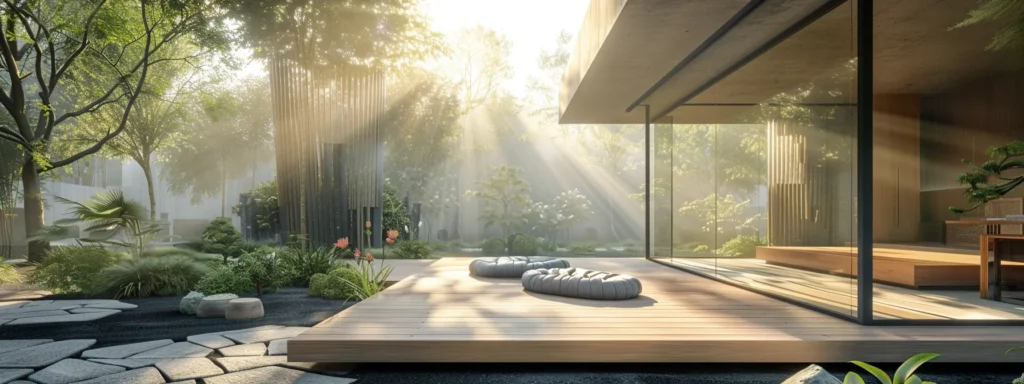
The selection of synthetic decking presents certain limitations that homeowners should carefully evaluate. Initially, the cost of high-quality synthetic options can be significant, impacting the overall budget. Additionally, these materials may retain heat on warm days, affecting comfort levels. Aesthetic limitations often arise when compared to the natural beauty of wood, and there are noteworthy differences in lifespan. Lastly, installation procedures can present unique challenges, requiring precise techniques for successful outcomes.
Consider the Initial Cost of High-Quality Synthetic Decking
The initial cost of high-quality synthetic decking can be a significant consideration for homeowners. While these materials often provide benefits like low maintenance and enhanced durability, the upfront investment tends to be higher than that of traditional wood options. Homeowners should evaluate this financial commitment against long-term savings from reduced maintenance and the extended lifespan of synthetic decking, ultimately making an informed decision that aligns with their budget and outdoor living needs.
Examine Potential Issues With Heat Retention on Hot Days
One notable challenge with synthetic decking is its tendency to retain heat on hot days, which can affect comfort levels for individuals using the outdoor space. Unlike natural wood, which generally stays cooler, synthetic materials can become uncomfortably warm under direct sunlight. Homeowners may want to consider the placement of furniture or install shaded areas to enhance comfort while enjoying their decks during peak temperatures.
Review the Aesthetic Limitations Compared to Natural Wood
Synthetic decking, while durable and low-maintenance, often lacks the genuine aesthetic appeal found in natural wood. Homeowners may notice that synthetic materials typically do not offer the same variety of colors and grain patterns as wood, leading to a less authentic appearance. This limitation can affect the overall atmosphere of outdoor spaces, making it essential for homeowners to carefully weigh their design priorities when choosing between synthetic and natural decking options.
Discuss the Lifespan Differences Between Synthetic and Wood
The lifespan of decking materials varies significantly between wood and synthetic options. Wood decking, such as cedar and redwood, can last between 15 to 30 years with proper care, but factors like moisture and insect damage can shorten this duration. In contrast, synthetic decking typically offers a longer lifespan, often exceeding 25 years, due to its resistance to weather-related wear and lack of susceptibility to pests, making it a reliable choice for homeowners seeking longevity in their outdoor spaces.
Analyze Any Challenges With Installation Procedures
The installation of synthetic decking can present various challenges that homeowners should consider. Unlike traditional wood, synthetic materials often require specific fastening techniques to ensure stability and prevent warping over time. This necessity may involve additional steps during installation, such as ensuring proper alignment and using compatible tools, which can extend the overall project timeline and require expertise that might not be readily available to all homeowners.
Compare Wood and Synthetic Decking for Your Home Project
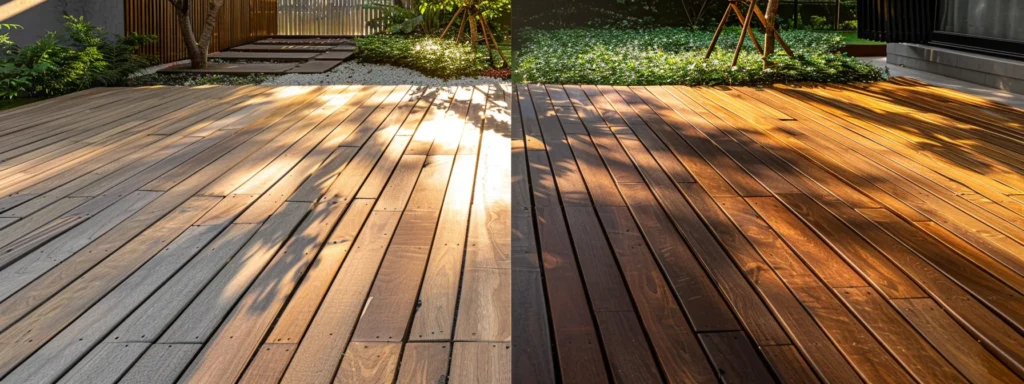
When considering decking options for a home project, key factors include cost-effectiveness, maintenance routines, aesthetic compatibility with different home styles, and long-term investment benefits. This section evaluates how wood and synthetic materials compare across these areas, providing practical insights to help homeowners make an informed decision that suits their needs and enhances their outdoor space.
List Key Factors to Think About When Choosing Decking
When selecting decking for a home project, homeowners should consider several key factors to ensure the best choice for their outdoor space. Important aspects include the budget, maintenance requirements, durability, and aesthetic appeal of both wood and synthetic materials. Assessing these elements can help homeowners make informed decisions that align with their lifestyle needs and long-term investment goals, enhancing the overall functionality and beauty of their outdoor environments.
Rank Cost-Effectiveness Between Wood and Synthetic Options
When evaluating cost-effectiveness between wood and synthetic decking, homeowners often find that initial expenses for quality wood, like cedar or redwood, can be lower than those for high-end synthetic materials. However, synthetic decking typically offers a longer lifespan and reduced maintenance needs, ultimately resulting in lower overall costs in the long run. Homeowners should consider both upfront and long-term costs to make a choice that aligns with their budget and outdoor living goals.
Identify Maintenance Routines for Both Decking Types
Maintaining wood and synthetic decking involves different routines tailored to their unique properties. Wood decking requires regular cleaning and sealing to protect against weather elements and extend its lifespan, while homeowners should also inspect for signs of rot or insect damage. In contrast, synthetic decking often demands minimal upkeep, primarily involving occasional washing to remove dirt and debris, allowing homeowners to enjoy their outdoor spaces without the intensive maintenance associated with wood.
Discuss Aesthetic Compatibility With Different Home Styles
When selecting decking materials, compatibility with various home styles is essential for homeowners. Wood decking often complements traditional and rustic designs, providing a warm, classic aesthetic that enhances curb appeal. Conversely, synthetic decking material offers a modern look that can blend seamlessly with contemporary homes, providing flexibility in color and texture choices, which allows homeowners to achieve their desired outdoor ambiance without compromising on durability or maintenance needs.
Evaluate Long-Term Investment Benefits of Each Choice
When evaluating long-term investment benefits, both wood and synthetic decking present unique advantages. Wood decking, while initially less expensive, often necessitates regular maintenance and care to sustain its integrity and appearance, which can add to long-term costs. In contrast, synthetic decking typically involves a higher upfront investment but significantly reduces maintenance efforts and expenses over time, making it a cost-effective choice for homeowners who prioritize durability and longevity.
Make an Informed Decision Between Decking Types
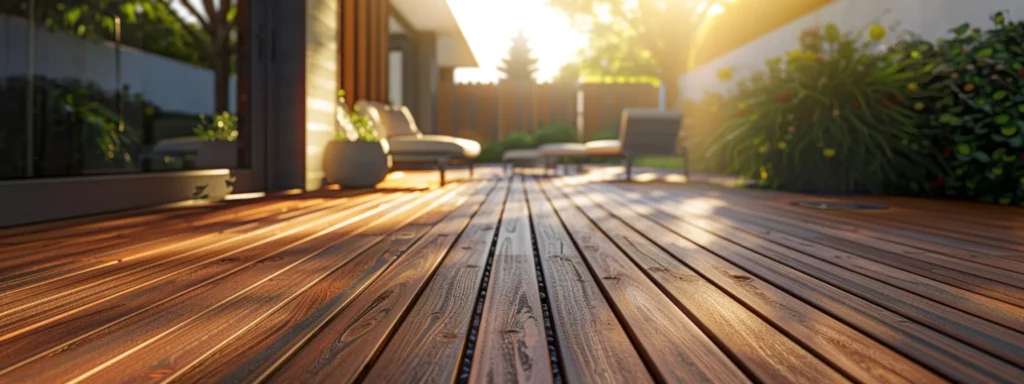
Homeowners should reflect on their lifestyle and outdoor usage needs when deciding between wood and synthetic decking. Consulting with experienced professionals can provide personalized recommendations. Gathering feedback from others who have made similar choices can offer valuable insights. Creating a pros and cons list based on these findings, while weighing immediate needs against long-term plans, will aid in making an informed decision.
Reflect on Your Lifestyle and Outdoor Usage Needs
When homeowners assess their lifestyle and outdoor usage needs, several factors come into play that influence the choice between wood and synthetic decking. For instance, families that often host gatherings may prioritize durable materials that can withstand frequent use and require minimal maintenance, making synthetic options an appealing choice. Conversely, those seeking a more traditional aesthetic and who enjoy regular upkeep might find natural wood decking better suited to their tastes, even if it entails a commitment to ongoing care to maintain its appearance.
Consult With Professionals for Personalized Recommendations
Consulting with professionals can provide homeowners with valuable insights when deciding between wood and synthetic decking. Experienced contractors can assess individual needs, preferences, and budget constraints, helping to clarify the pros and cons of each material. This guidance can be instrumental in selecting the best decking option that aligns with the homeowner’s vision for their outdoor space, ensuring a satisfying and lasting investment.
Gather Feedback From Homeowners With Similar Choices
Gathering feedback from homeowners who have chosen wood or synthetic decking can provide valuable insights into the pros and cons of each material. Individuals with firsthand experience can share their perspectives on maintenance routines, durability, and aesthetic appeal, helping potential buyers make informed decisions. By learning about the experiences of others, homeowners can better understand what to expect from either decking option, ultimately guiding them to a choice that aligns with their needs and preferences.
Create a Pros and Cons List Based on Your Findings
Creating a pros and cons list serves as a practical step for homeowners deciding between wood and synthetic decking. This method allows individuals to weigh the benefits and drawbacks of each material, such as the natural beauty of wood against the low maintenance of synthetic options. By evaluating these factors, homeowners can make a clear and informed decision that aligns with their lifestyle and budget, ultimately enhancing their outdoor spaces.
Take Time to Weigh Immediate Needs Against Long-Term Plans
When homeowners consider decking options, it is essential to evaluate their immediate needs alongside long-term plans. For instance, if entertaining guests on the deck is a priority, selecting a durable, low-maintenance option like synthetic decking may be advantageous. However, those who appreciate the charm of natural wood and are willing to commit to ongoing upkeep might prefer traditional materials, knowing they will require more attention over time to maintain their appearance.
Conclusion
Evaluating the pros and cons of wood and synthetic decking is essential for homeowners aiming to enhance their outdoor spaces. Understanding the advantages of natural aesthetics, comfort, and durability of wood, alongside the low maintenance and longevity of synthetic options, enables informed decision-making. Homeowners should consider their lifestyle, budget, and aesthetic preferences when choosing the right decking material. Ultimately, selecting the appropriate decking enhances outdoor enjoyment, adding value and functionality to any home.

